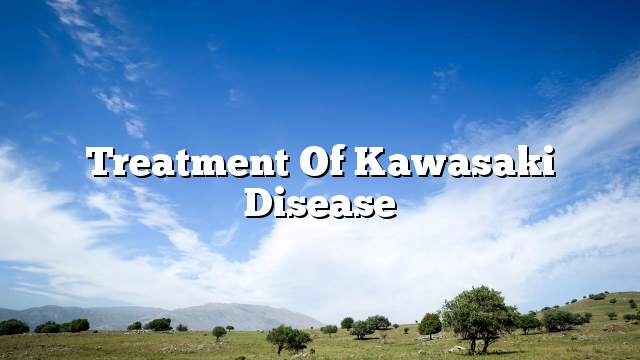Ways to treat Kawasaki disease
Kawasaki disease is an idiopathic disease especially affecting children, an inflammation of the medium and small blood vessels, especially the heart’s coronary arteries. It is also called lymphatic lymph node syndrome; it also affects the lymph nodes, skin and mucous membranes inside the mouth, nose, throat, Is the main treatment for this disease, but rarely occur in the heart complications of the coronary arteries and need this situation to medical interventions or surgical, and summarize the objectives of treatment in the following:
- Reduce fever and inflammation to improve symptoms.
- Prevent the disease from affecting the coronary arteries.
Please note that Kawasaki disease can cause serious health problems, so it is best to treat the patient in hospital, at least in the first stage of treatment.
Initial treatment
Aspirin is treated with high doses of 80-100 mg / kg daily, and most experts recommend that it be kept until 24-48 hours after the heat has stopped. Aspirin can be used at low doses (3-5 mg / kg / day) (6-8) weeks or more if there is a need to reduce the chance of clots.
Intravenous immunoglobulin is used to treat inflammation and to reduce complications of the disease on the heart. In some cases, it is combined with steroids to reduce the incidence of coronary artery aneurysm. Although intravenous immunoglobulin is used, 5% of patients develop temporary myocardial infarction, 1% develop giant amyloidosis, and 10% Response to the first dose, where the high temperature persists for 36 hours after the first dose. Patients are given a second dose of intravenous immunoglobulin. In cases of non-response to the second dose, these patients are given prednisolone at 35 mg / kg in 2 to 3 hours Duration (1-3) days.
Most children respond to treatment from this disease and completely recover from the acute phase and need no further treatment, only by following a healthy diet and a healthy lifestyle, this helps reduce the risk of future heart disease. Children who took intravenous immunoglobulin doses should wait 11 months before taking measles and chickenpox vaccines because they may prevent these vaccines from working well.
Long term treatments
If the child has any evidence of heart problems, doctors recommend periodic follow-up tests to monitor heart health at regular intervals of six to eight weeks after the onset of the disease, and then monthly follow-ups. In some cases, a child with coronary angiography may require:
- Anticoagulants : These drugs – such as aspirin, clopidogrel (plavix), warfarin (coumadin) and heparin – help prevent the formation of clots.
- Coronary artery catheterization : This procedure opens the narrow arteries that block blood flow to the heart.
- Networking Stent : This procedure involves implanting the organ into the occipital artery to help support that opening and reduce the possibility of re-occlusion.
- Gastric bypass : A process that converts the bloodstream around diseased coronary arteries by inoculating a section of blood vessels from the stem, chest, and arm to be used as an alternative route to the heart.
